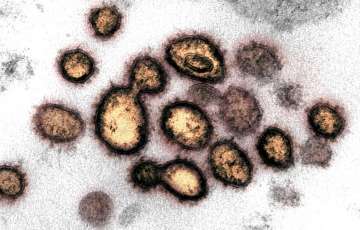'Unwarranted' to think COVID-19 will vanish down the summer, says Indian virologist
While the possibility for reduced spread of SARS-CoV-2 due to hot weather cannot be ruled out, it will be unwarranted to assume that COVID-19 will vanish down the summer, according to an Indian virologist.

While the possibility for reduced spread of SARS-CoV-2 due to hot weather cannot be ruled out, it will be unwarranted to assume that COVID-19 will vanish down the summer, according to an Indian virologist. The arrival of summer in India may have raised hopes that hot and humid weather could slow the COVID-19 progression but virologist Naga Suresh Veerapu believes that outbreak and pandemic occurrences often do not follow seasonality.
Veerapu, Assistant Professor, Department of Life Sciences, Shiv Nadar University, Uttar Pradesh noted that it is too early to speculate on the changes in the epidemiological landscape of SARS CoV-2 with the seasons.
"It is sensible to rationalise that high temperature reduces the spread of SARS-CoV-2, unwarranted though assuming the virus vanishes down the summer," he told PTI.
In April, researchers at the Massachusetts Institute of Technology (MIT) in the US announced that a warm and humid weather is linked to slower spread of the novel coronavirus, suggesting that Asian countries experiencing monsoon may experience lesser transmission of the virus.
Their study assessed data on the number of COVID-19 infections in different parts of the world and compared it with two parameters of weather from all the regions -- temperature and humidity. Similarly, a public health official of the Trump Administration recently announced a study which found that sunlight, heat, and humidity can create conditions that are less favourable for the spread of novel coronavirus.
The results of the study, conducted by the Science and Technology Directorate of the US Department of Homeland Security, came as a pleasant news for countries such as India which witness hotter and humid weather conditions. However, a global study published last week in the Canadian Medical Association Journal, found that temperature and latitude are not associated with the spread of COVID-19 disease, adding that school closures and other public health measures were, on the other hand, having a positive effect on containing the novel coronavirus.
Veerapu noted that the possibility for reduced spread of SARS-CoV-2 due to hot weather cannot be ruled out, and India can gain the window of opportunity to work on countermeasures to contain the disease.
However, he explained that regardless of the hot weather, SARS-CoV-2 may continue human-to-human spread under household conditions, and in confined spaces.
"Therefore all measures containing the virus spread must continue until the flattened India COVID-19 curve is sustained," he said.
In the past, many infectious diseases have been seen to wax and wane with changes in weather conditions. For example, flu typically arrives with the colder winter months, as does the norovirus vomiting pathogen, while others such as typhoid tend to peak during the summer. "In nature each biological element or living organism has its own life span that is regulated by environmental factors, including temperature. Outside hosts, viruses just exist as particles," Veerapu explained.
He noted that viruses are no exception to functional alteration when they are circulating as particles in the environment. "Infectious droplets released by an infected person in an open environment on a hot summer day can have adverse effects on viruses, the hot weather may render the virus inactive, and the virus may lose its infectious capacity quickly or disintegrate fast," Veerapu added.
Rajesh Kumar, Senior Consultant, Department of Internal Medicine, Paras Hospital in Gurugram said that currently there is limited knowledge about the way the new coronavirus behaves. "We still have no idea how it will react to anything. But, according to the past information, high temperature has some effect on coronavirus and its impact also gets reduced under such climatic conditions," Kumar told PTI.
Giving the examples of Middle East respiratory Syndrome (MERS), and Severe Acute Respiratory Syndrome (SARS), he noted that the coronaviruses behind these diseases were sensitive to high temperature, humidity and sunlight and couldn't survive in such weather conditions.
"Similarly, if we see the world map, this novel coronavirus has spread from Wuhan, China, to those countries, which fall in the same latitude resulting in similar weather conditions. If we look at the countries below it, they are least affected, with few moralities,” Kumar noted. According to a report by the National Academies of Sciences, Engineering, and Medicine, experimental studies do show a relationship between higher temperatures and humidity levels, and reduced survival of SARS-CoV-2 in the laboratory.
However, the report noted that there are many other factors besides environmental temperature, humidity, and survival of the virus outside of the host, that influence and determine transmission rates among humans in the 'real world'. "Experiments in laboratories are performed under controlled conditions and they are highly regulated, certainly difficult to create natural temperature variations, Veerapu noted.
"Nevertheless, observations made in the laboratory are usually generalised and extrapolated," he added. Kumar noted that in order to prove whether rise in temperature would be beneficial in eliminating the coronavirus needs extensive scientific research, adding "but we have little time in our hands."